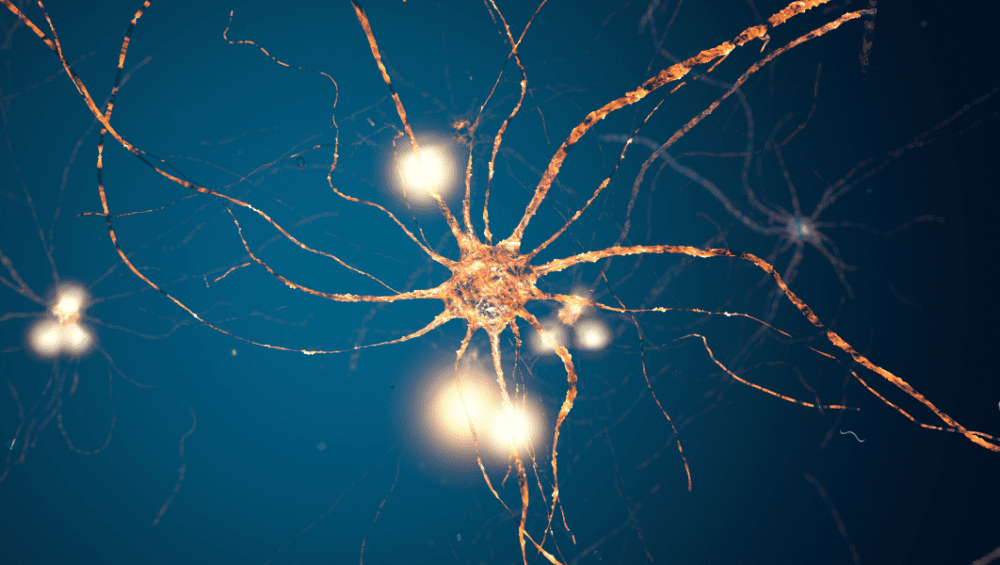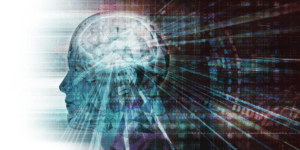As a functional medicine practitioner, I’m always exploring innovative treatments to help my patients achieve optimal health. One tool that has gained significant attention in recent years, and that I’ve seen firsthand benefits from, is vagus nerve stimulation (VNS). But does vagus nerve stimulation really work? Let’s take a closer look at the science, real-world applications, and its potential for long-term efficacy.
Understanding Vagus Nerve Stimulation
The vagus nerve plays a crucial role in regulating many bodily functions, including heart rate, digestion, and inflammation control. VNS is designed to improve the signaling capacity of this nerve, potentially offering therapeutic benefits for a range of conditions and contributing to overall well-being.
Recent research has provided promising insights into the effectiveness of VNS. Studies suggest that it may help with inflammatory diseases, mental health disorders, and even neurological conditions.
The Science Behind VNS
1. VNS and Inflammation
One of the most compelling applications of VNS is its potential impact on inflammation-related disorders. Research shows that inflammation has been modulated by VNS in a variety of acute and progressive inflammatory conditions ranging from asthma to stroke to Sjogren’s disease.[1,2, 3,4] Mechanistic and clinical data also suggest it could play a role in reducing the excessive inflammation seen in conditions like COVID-19.[5]
2. VNS for Mental Health
VNS has also shown promise for mental health, particularly PTSD and stress-related conditions. A 2021 study found that non-invasive VNS not only reduced PTSD symptoms but also lowered the inflammatory stress response.[6] Research also suggests potential benefits for depression, with small studies indicating improvements in symptoms.
3. FDA Approvals and Regulatory Support
The growing body of evidence supporting VNS has led to multiple FDA clearances for non-invasive VNS devices. These approvals include the use of VNS for the acute treatment of pain associated with episodic cluster headaches in adults, as well as the acute and preventive treatment of migraines in adolescents (ages 12 and above).[7,8] Such regulatory backing further strengthens the credibility of VNS as an effective therapy.
4. Long-Term Benefits of VNS
One of the most intriguing aspects of VNS is its potential for cumulative benefits over time. A review of multiple studies found that patients who used VNS for epilepsy experienced a gradual increase in symptom improvement, with a higher percentage of patients achieving a 50% reduction in seizure frequency over extended use.[9] This suggests that VNS may offer lasting benefits beyond immediate symptom relief.
The Role of ElectroCore in Advancing VNS Research
ElectroCore, the creators of Truvaga, has been at the forefront of VNS research for over 20 years, pioneering non-invasive vagus nerve stimulation and conducting some of the most extensive studies in the field. Their research has validated VNS’s effectiveness for conditions such as migraine, cluster headaches, stress, cognitive function, and overall wellness. With more than seven randomized controlled trials, 30+ peer-reviewed mechanism of action papers, and 40+ peer-reviewed clinical studies, ElectroCore has built one of the strongest scientific foundations for non-invasive VNS applications.
Truvaga’s non-invasive VNS technology is a direct result of ElectroCore’s extensive research and innovation. Their clinical studies, featured on Truvaga’s website, highlight VNS’s impact on heart rate variability (HRV), stress response, memory enhancement, and cognitive function. These findings confirm VNS’s role in improving autonomic nervous system balance and enhancing mental clarity, further establishing it as a science-backed wellness solution.
As ongoing clinical studies and consumer trials continue, ElectroCore remains committed to leading the future of VNS research, exploring new ways to improve lives and optimize health.
Real-Life Success Stories
While research continues to highlight the potential of VNS, clinical studies only tell part of the story. In my practice, I have seen firsthand how VNS can be a game-changer for some patients, offering meaningful improvements in their daily lives. However, as with any therapy, results vary based on individual needs, so a comprehensive treatment plan is key.
Here are two remarkable cases that illustrate the real-world impact of VNS:
Case Study 1: Parkinson’s Disease
A 73-year-old man diagnosed with Parkinson’s disease had tried numerous holistic approaches with limited success. After incorporating VNS into his care plan, he experienced a dramatic change in just 10 days. Having lost his sense of smell 13 years prior, one of the early symptoms of Parkinson’s, he called me to share that he could suddenly smell bacon cooking downstairs. Since then, his sense of smell has returned about 70% of the time. Additionally, he has reported better energy, improved sleep, and reduced tremors, allowing him to play pickleball multiple times a week.
Case Study 2: Post-Concussion Syndrome and Depression
A 56-year-old former world-class athlete struggled with severe fatigue, digestive issues, and depression following a history of concussions and psychological trauma. After functional lab testing revealed nutrient deficiencies and gut microbiome imbalances, we integrated VNS into her Health Upgraded treatment plan. At the six-week mark, she described the sensation as if “the light switch was turned back on.” Her mood, digestion, and mental clarity improved significantly and these benefits have continued as she maintained dietary and lifestyle changes.
Is VNS Right for You?
While VNS has shown promising results across various conditions and use cases, it’s not a one-size-fits-all solution. Its effectiveness can vary depending on individual health conditions, and more research is needed to fully understand the mechanisms behind VNS and optimize its application. Consulting with a healthcare professional can help determine whether VNS is a suitable option for your specific needs.
Final Thoughts
Vagus nerve stimulation represents an exciting advancement in health and wellness, offering potential benefits for inflammation, mental health, neurological disorders, and more. As research continues to evolve, VNS could revolutionize how we approach a wide range of health conditions, providing a drug-free, non-invasive option for many individuals seeking better well-being.
If you’re curious about how VNS could support your health, speak with a healthcare provider to explore its potential benefits for you.
Sources
[1] Steyn, E., Mohamed, Z., & Husselman, C. (2013). Non-invasive vagus nerve stimulation for the treatment of acute asthma exacerbations- results from an initial case series. International Journal of Emergency Medicine, 6(7). https://doi.org/10.1186/1865-1380-6-7
[2] Arsava, E. M., et al. (2022). Assessment of safety and feasibility of non-invasive vagus nerve stimulation for treatment of acute stroke. Brain Stimulation, 15(6), 1467-1474. https://doi.org/10.1016/j.brs.2022.08.005
[3] Tarn, J., Legg, S., Mitchell, S., Simon, B., & Ng, W. F. (2019). The effects of noninvasive vagus nerve stimulation on fatigue and immune responses in patients with primary Sjögren’s syndrome. Neuromodulation, 22, 580–585. https://doi.org/10.1111/ner.12917
[4] Lerman, I., Hauger, R., Sorkin, L., et al. (2016). Noninvasive transcutaneous vagus nerve stimulation decreases whole blood culture-derived cytokines and chemokines: A randomized, blinded, healthy control pilot trial. Neuromodulation, 19(3), 283–290. https://doi.org/10.1111/ner.12418
[5] Tornero, C., et al. (2022). Non-invasive vagus nerve stimulation for COVID-19: Results from a randomized controlled trial (SAVIOR I). Frontiers in Neurology, 13, 820864. https://doi.org/10.3389/fneur.2022.820864
[6] Bremner, J. D. (2023). Vagal nerve stimulation for patients with stress-related psychiatric disorders and addictions. Journal of Health Service Psychology, 49(3), 129-135.
[7] U.S. Food & Drug Administration. (2019). gammaCore receives FDA clearance for acute and preventive treatment of migraine in adolescents. EMPR News. Retrieved March 4, 2025, from https://www.empr.com/home/news/gammacore-electrocore-expanded-approval-teens-acute-and-preventive-migraine-treatment/
[8] Healio Psychiatry. (2022). FDA grants breakthrough device designation for vagus nerve stimulation in PTSD treatment. Healio. Retrieved March 4, 2025, from https://www.healio.com/news/psychiatry/20220114/fda-grants-breakthrough-designation-for-device-to-treat-ptsd
[9] Englot, D. J., Chang, E. F., & Auguste, K. I. (2011). Vagus nerve stimulation for epilepsy: A meta-analysis of efficacy and predictors of response. Neurology, 76(12), 1179-1187. https://doi.org/10.1212/WNL.0b013e3182a393d1
Author bio:
Dr. Navaz Habib, is the bestselling author of “Activate Your Vagus Nerve,” and the newly released “Upgrade Your Vagus Nerve.” He is also the host of “The Health Upgrade Podcast.”
After graduating as class valedictorian from Canadian Memorial Chiropractic College in 2010 and went on to practice traditional chiropractic for years, until he utilized the power of functional medicine to transform his own health. Dr. Habib is the founder of “Health Upgraded” an online functional health consulting clinic, supporting optimal health by elevating the awareness and function of the vagus nerve.






